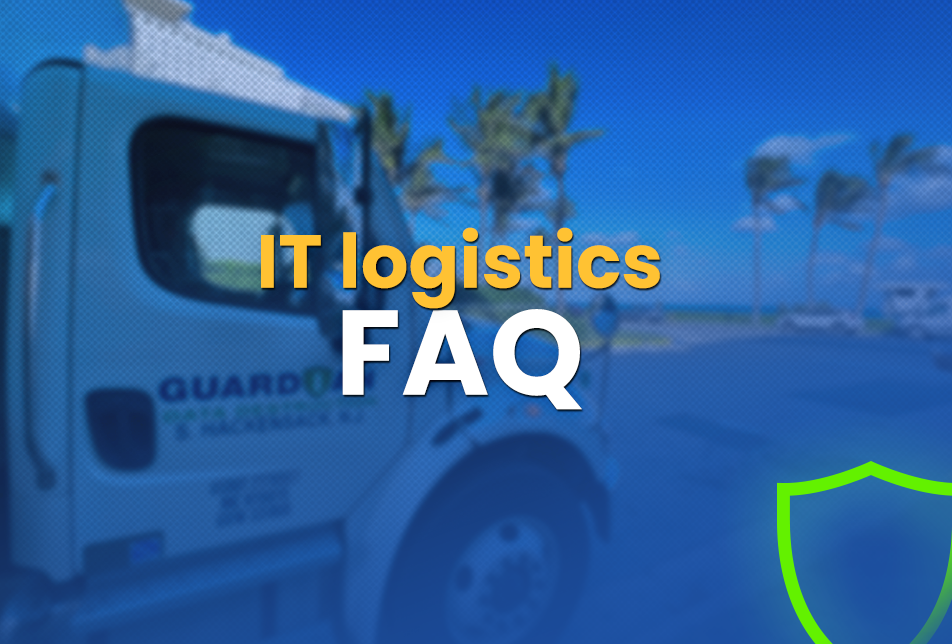Organizations recognize the risk of in-transit loss that results in an incident or data breach. That’s the primary rationale for onsite data destruction, before asset disposition.
However, secure packing and logistics of IT assets is still required under certain conditions:
- The IT assets contain valuable data that must be protected in transit
- The IT equipment has value (relocation, lease return, redeployment or resale) that must be retained in transit
- Equipment migration from site to site or data center to data center
- Assets with encrypted hard drives transported for disposition
A single instance of compromised data, especially due to sloppy or unwise shipping and tracking, can devastate a brand. Short-sighted, cost-driven decisions can risk everything.
“The terrifying and real problem is this: if the shipper does not know exactly what they have shipped, there’s no way that their job can be verified before processing. This gives ample and widespread opportunities for a data breach to occur due to lack of accountability at every step: storage, packing, loading dock, warehouse staff and logistics (to name a few). Additionally, the lack of verified data destruction (shred, wipe, degauss) or encryption before loading amplifies the data security challenge. If a single device, or worse, a pallet or a box of multiple devices, goes missing, how do you know what is missing and the liability involved?
That RISK, the uncounted, untracked, unverifiable disconnect between the shipping and receiving, is what keeps me up at night.”
Eric Dorn, Senior VP and GM
SIPI Asset Recovery
Data Privacy: What Keeps Me Up At Night

Guardian Data Destruction’s specialized Secure IT Packing and Logistics works with companies around the world to ensure a door-to-door shipping process that the truck is locked, sealed and tracked with GPS which ensures responsibility and accountability. Many common questions about moving IT assets are below. If we’ve missed a pressing or important question, just ask!
1. What are the most common situations for secure IT logistics?
Any data-bearing device that is moved as a result of:
- Moving or consolidating data center servers (in and out of racks).
- Bulk moves of laptops, tablets, desktop boxes (CPUs), phones, etc. that have hard drives or live data, bound for another facility, disposition or offsite data destruction.
- Accumulated devices that have been packed and stored over several weeks or months (sometimes years).
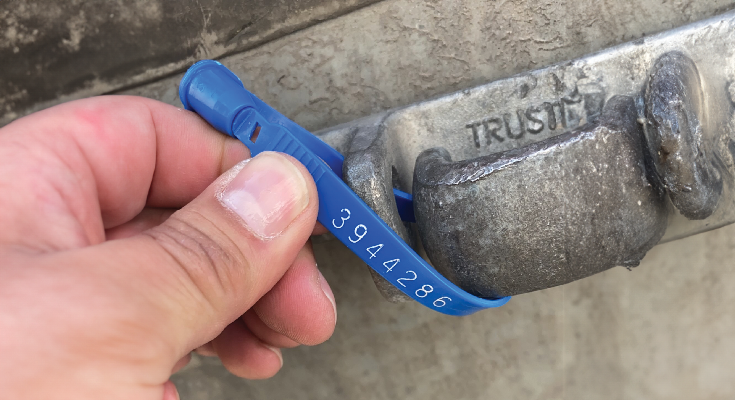
2. What is white glove packing for IT equipment?
White glove packing is a level of high-touch packing that requires extra care and precautions to handle, pack and transport sensitive or valuable devices. The objective is to deliver every item in the same condition as it was picked up – not even a scratch!
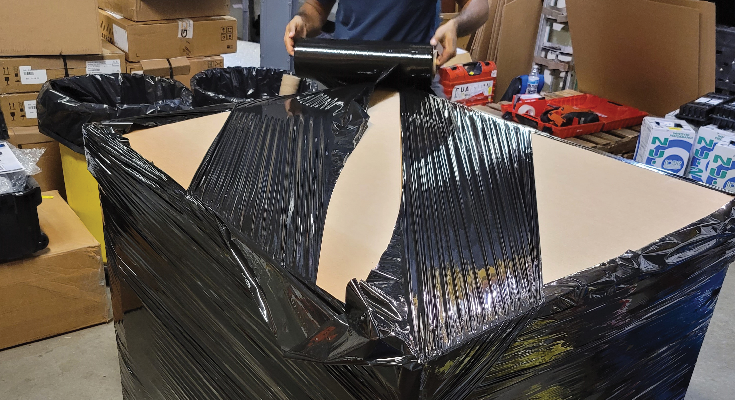
3. What is a Gaylord?
A Gaylord is a large, heavy-duty cardboard box that is 40” x 48” x 48”, matching the size of the base pallet. It is designed for shipping bulky, small and miscellaneous items.
In IT asset logistics, Gaylords are typically used for gathering and shipping cumbersome, awkward and loose office and computer cables and peripherals (keyboards, mice, desk phones) that either don’t stack well or are bound for sorting or recycling. Once packed, Gaylords can be lidded or open and then shrink-wrapped and banded as required by weight or contents or client specification.
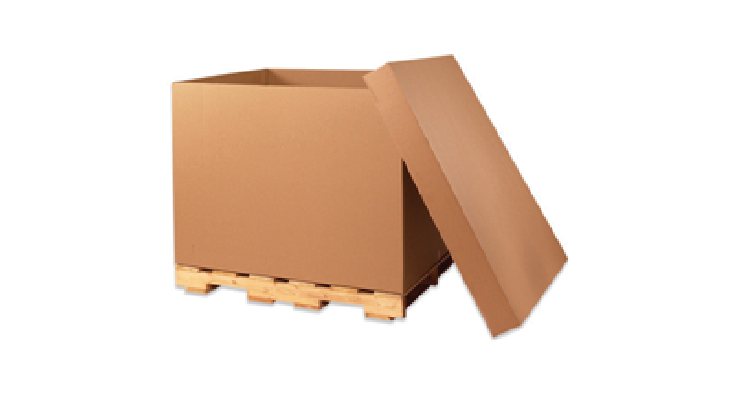
4. What is a C-bin?
Also termed a commercial moving box or moving bin, a C-bin is a standard-sized cardboard box that is 48” x 24” x 28.
In IT asset packing and transports, C-bins are used for equipment moving in and out of office buildings. The C-bin fits comfortably on a dolly and can be moved easily through doorways and cubicles. More agile than a pallet but limited in capacity in weight so that it can be moved around easily, C-bins are used for small, miscellaneous or delicate items that can’t be stacked without tipping (e.g., laptops on edge to protect the screens). Once they’re loaded on a truck for shipping, they’re typically shrink-wrapped and/or banded to a pallet.
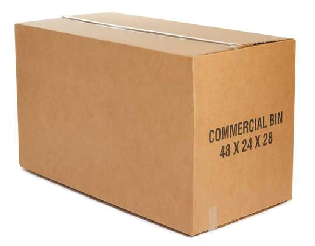
5. We don’t have pallets. Can we ship boxes?
Whatever is packed can be shipped. That includes C-bins, cartons, equipment or boxes of any size. Depending on the location setup, packed boxes are either palletized on the truck or loading dock because the shipping industry counts and tracks pallets (not boxes) or loose, large items (like data center racks).
The Asset Transfer Form will list the details of each box or carton and the Bill of Lading (BOL) will list the # of pallets, rolling units (racks, copiers, etc.) and crates.
For unloading with “inside delivery”, the delivery team will break down the pallet either in the truck or loading dock and then move the cartons via dolly to the designated location.
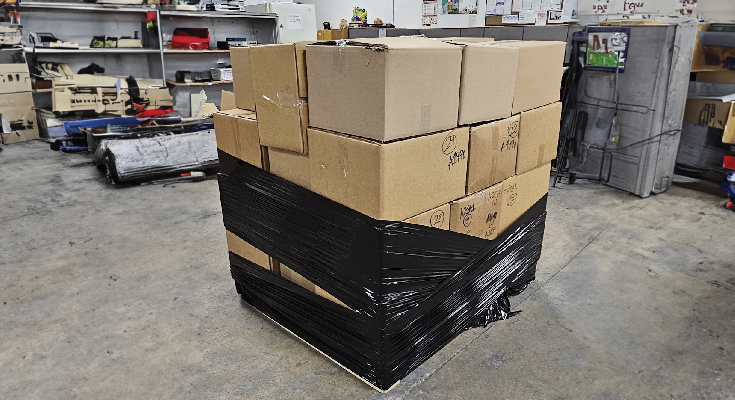
6. We don’t have a loading dock. How is that handled?
If you don’t have a loading dock, that’s not a problem but your logistics company will need to dispatch a truck that has a liftgate.
All Guardian Data Destruction trucks have liftgates. Let us know if there’s no loading dock access and we’ll arrive with the right supplies, manpower and equipment.

7. My building doesn’t have any parking. How does that work for loading and unloading boxes or pallets?
This is dependent on your logistics provider. Some require onsite parking or a reserved spot and there can be extra charges.
Note: Please be aware that Guardian doesn’t charge for parking challenges; drivers are responsible for locating a suitable parking spot with sufficient clearance for loading and unloading C-bins and dollies if a loading dock is not available. If this applies to your circumstances, we will dispatch the appropriate manpower to ensure the driver remains with the vehicle.
8. What records or paperwork do I need to create? And what will I expect to receive?
You shouldn’t have to create anything. Drivers should come with the proper paperwork listing what is to be picked up. The Asset Transfer Form (ATF) lists in detail all the items that are transferring control. If there’s a discrepancy between what was picked up vs what was reserved, the final pickup will be detailed on the ATF. It should include:
- company information (address, contact info) of the transferor (current owner) and transferee (new location/owner).
- asset description – full counts of every device to be loaded
- signatures and dates – both transferor and transferee
Once everything is ready to be loaded onto a truck, the driver should create a Bill of Lading (BOL) which details the terms and condition of the transportation of goods. The BOL should include:
RELATED: How the Asset Transfer Form helps chain of custody >
- shipper/origin information – (name, address, contact info of the transferor (current owner)
- consignee/delivery information – name, address, contact info of the who will be accepting delivery
- carrier info – name, address, contact info of the transportation company or carrier delivering the goods
- vehicle/vessel information
- description of goods – quantity of pallets, crates and rolling units with weights and dimensions
- special instructions for handling, storage and delivery
- shipping terms – prepaid, collect and responsibility
- freight charges – terms and method of payment
- today’s date
- ship date (if different)
- expected or promised delivery date
- dated signatures of the shipper, carrier, and consignee
Make and retain copies or photos of the ATF and BOLs after they have been signed by both parties. They are required for chain of custody, receipt of goods and contract of carriage.
Note: For LTL (less than truck load) pickups, the BOL is emailed ahead of time. For all logistics projects, we recommend taking photos of shipments before, during and after packing and loading for comparison purposes.
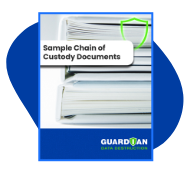
Download a sample set of Chain of Custody documentation
9. Are loading and unloading included in every quote? What if I have unusual circumstances for pick up and delivery?
Loading of goods should be included with every quote. Unloading at final delivery is determined by the client and should be agreed upon beforehand.
Shippers and receivers must be aware of unusual or oversized items so that the right equipment and manpower are on hand for packing, loading, unloading or unpacking. If this is the case, provide approximate weights, and dimensions and note if standalone units are wheeled (castors) or not. And, consider sending photos of the shipment to ensure a seamless pickup and delivery.
10. Do I need to request packing and shipping separately or are they a bundled service?
Packing is generally included in all IT assets logistics quotes. However, if you have a prepacked shipment and just need transport services, provide information about the ready-to-go shipment (pallets, dimensions, weights).
Alternatively, you can request asset packing of any level without transport.
When it comes to packing and logistics, Guardian’s services are flexible to meet project criteria and security levels. Common packing requests include white glove, enterprise lift and shift packing, recycle pack, black shrink wrap (standard security), secure logistics, shockproof pallets, custom crating, individual item bubble wrap and box, dedicated transport, serial number scans and audits, adding asset tags and more.
Guardian’s shipping options for IT assets include GPS tagging, secure logistics, LTL (less than truckload), FTL (full truckload) and Team Truck FTL for enhanced security, reverse logistics (returns and recycling), cross-docking (consolidation and sorting), multiple destination, and short-term warehousing.
11. How far in advance do I need to schedule a logistics job?
This is dependent on the scope of the project, location and the logistics provider. You should expect a quote within 24 hours of a request but be aware that incomplete information will only delay authorization and scheduling.
Our policy is to respond flexibly to our clients to ensure that data is never vulnerable. But, when you don’t have all the details, we recommend that our customers reach out to our Logistics Team with all known information as early as possible. We can get you a ballpark quote, pencil in a date, truck(s), personnel, packing materials, special equipment and days onsite. (Moving a scheduled job back is typically much easier than squeezing a project in.)
12. How do I select a logistics provider? It’s a fairly basic service, right?
Considerations vary based on what you believe is most important. If price is always the primary decision driver, compliance, safety records, chain of custody and proactive communication may not be important to you. However, if you’re worrying about the security or disposition of assets when they’re in transit or out of your custody, consider these points as you evaluate IT packing and logistics providers.
- How well do they keep you informed of schedules, arrival and status?
Is there a knowledgeable project manager you can speak to if there are delays and can provide you with a proactive solution? If you’re looking for more than a portal solution, ask about proactive, human updates that occur in real-time (without an added service fee). - Do they offer additional tracking services?
Especially for small loads in an LTL shipment, GPS trackers offer you peace of mind with a constant location status. - Professionalism means fewer errors and less trouble later.
Ask for trained, bonded professionals so that the risk of error with your IT assets is not in question. - Do they understand and execute your chain of custody practices?
Defensible positions on data breaches rely on documentation and solid chain of custody practices. If you’re getting blank looks or pushback when you’re asking for dual signatures, accurate counts and asset verifications for every change in custody, it’s time to look for a service provider that supports the IT asset business model.
RELATED: Understand the value and importance of Chain of Custody >
- Can they consolidate, sort and cross-dock assets as part of a reverse logistics process?
Quick assessments, processing and distribution are only possible by managing the IT asset return process, especially in the case of lease returns and refurbishing. Look for a reverse logistics provider that efficiently handles goods and streamlines the full handling, sorting and disposition turnaround process to multiple destinations. - Ask about their Federal safety record.
Publicly available FMCSA’s OOS, ISS and CSA safety scores are an important evaluation metric for your logistics provider. As a buyer of services that involve the transportation of your equipment and data, you can evaluate the risk of working with carriers with federally registered low safety records. High CSA scores resulting from multiple safety violations from both driving and truck maintenance add cost, cause delays, increase driver turnover and impact productivity. All of these factors add risk to projects that depend on secure transport and chain of custody.
RELATED: How logistics safety records affect cost and performance >
- I have a lot of home-based, remote workers. Can my logistics provider help me with an IT asset retrieval program as part of a company-wide refresh?
Publicly available FMCSA’s OOS, ISS and CSA safety scores are an important evaluation metric for your logistics provider. As a buyer of services that involve the transportation of your equipment and data, you can evaluate the risk of working with carriers with federally registered low safety records. High CSA scores resulting from multiple safety violations from both driving and truck maintenance add cost, cause delays, increase driver turnover and impact productivity. All of these factors add risk to projects that depend on secure transport and chain of custody.
Working with your ITAD or IT Asset Manager, the logistics provider securely collects IT assets from a multitude of residential or business locations at the end of their lifecycle. Logistics providers that offer IT asset retrieval programs should collaborate with you to
- Arrange for remote onsite drive erasure before transport
- Establish logistics and operations for all IT equipment collection
- Manage incoming hardware, which may involve auditing, grading, recycling, distribution, documentation, reporting, reverse logistics and more
RELATED: Guardian’s Self-pack and ship “Box” program combines our data erasure and logistics expertise >
RELATED: Work-from-home employees have a strong impact on IT compliance and cybersecurity prevention >
Packing and logistics is our origin story
We’re focused on providing secure packing and logistics so that you don’t have to worry about the last leg or the last mile when it comes to disposition. Guardian Data Destruction’s IT Packing and Logistics team works hand-in-glove with anyone who is moving IT assets from A to B.
Guardian’s array of services ensures that secure IT logistics is stand-alone or seamlessly integrated as a part of a data destruction or data center decommissioning/move project.
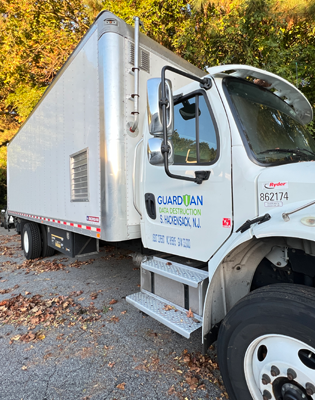
If you have questions about our tips or need assistance, don’t hesitate to reach out. Be sure to ask for a quote and demonstration project to compare your current computer equipment logistics with the industry’s best. Ask us for an IT Packing and Logistics quote >
Read next
- ITADs, VARs, MSPs and resellers, benefits of partnering with Guardian >
- Understanding white glove packing for IT assets >
- Watch: Secure IT logistics tour >
- Are logistics and shipping the same thing?
Sign up for email updates to receive the latest in data security options from Guardian Data Destruction >
